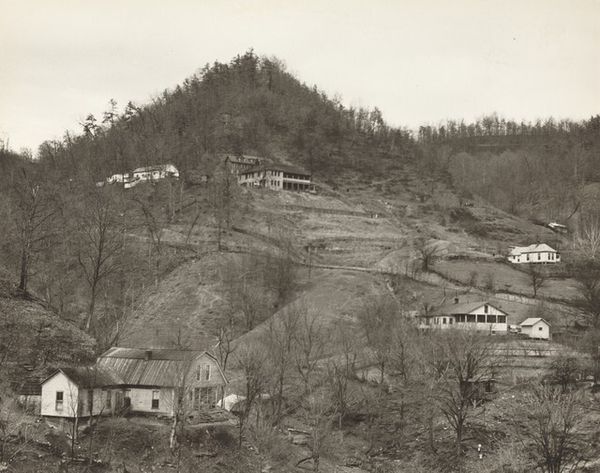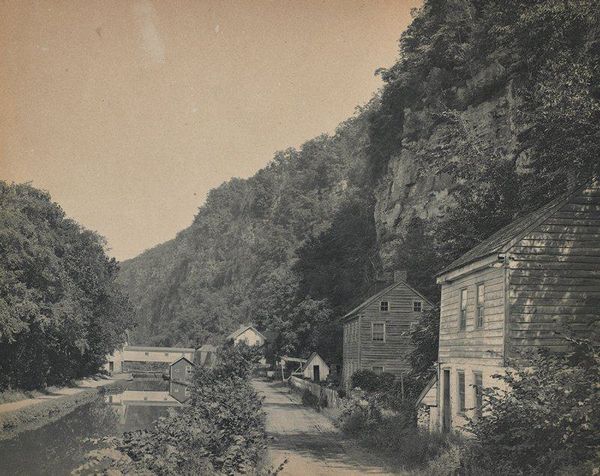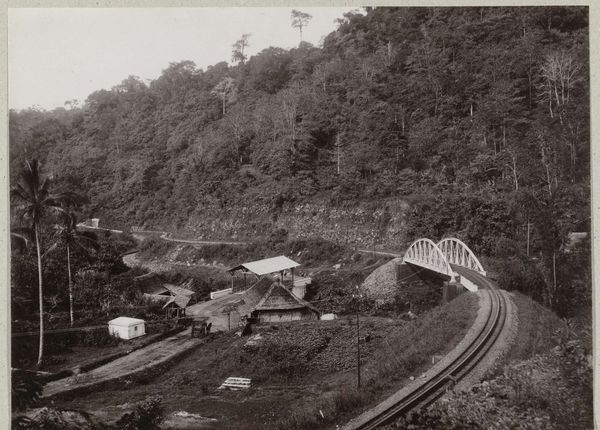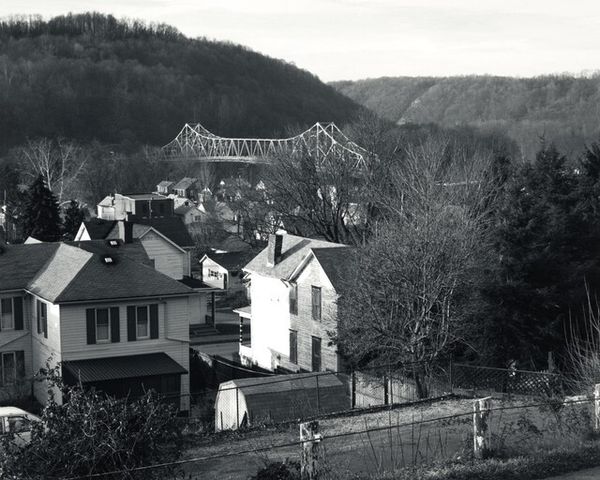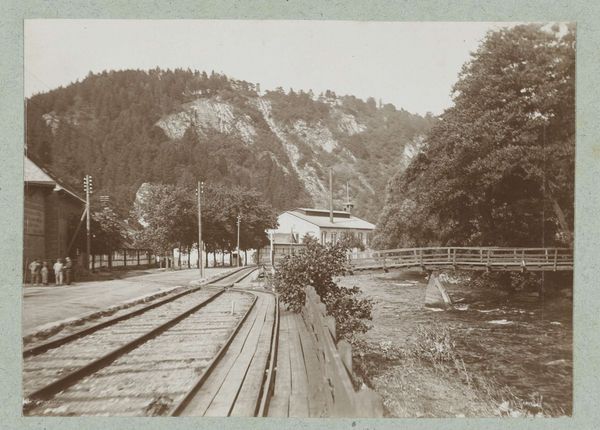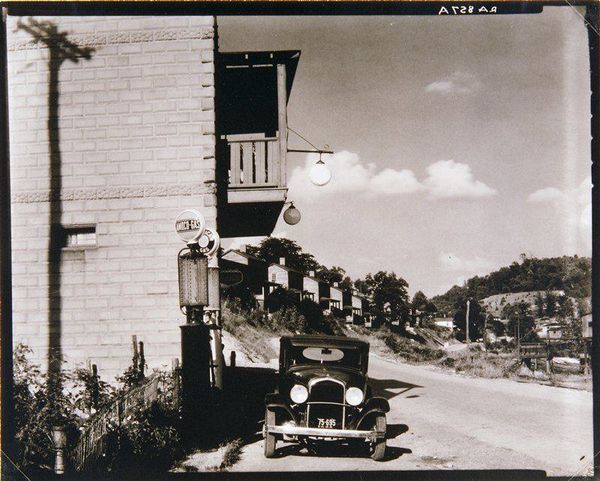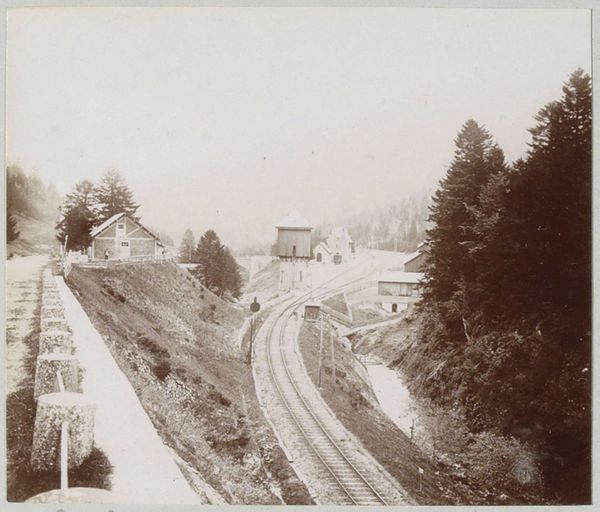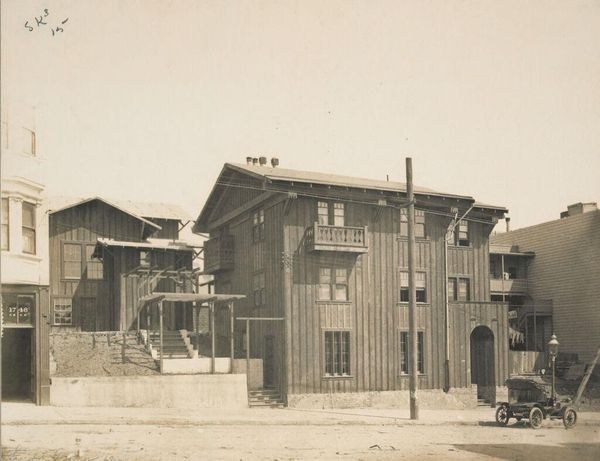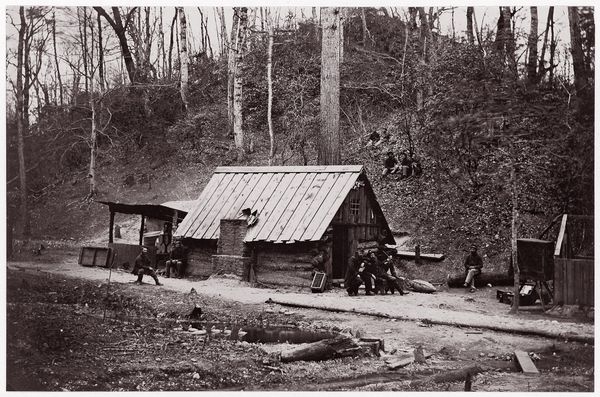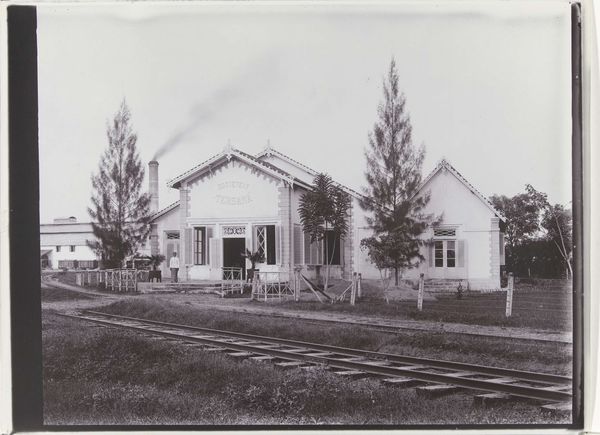
gelatin-silver-print, photography, gelatin-silver-print
#
urban landscape
#
gelatin-silver-print
#
architectural landscape
#
landscape
#
architectural photography
#
social-realism
#
photography
#
gelatin-silver-print
#
ashcan-school
#
cityscape
#
realism
Dimensions: 6 1/16 x 6 3/4 in. (15.4 x 17.15 cm) (image)17 1/4 x 13 9/16 in. (43.82 x 34.45 cm) (mount)
Copyright: No Copyright - United States
Editor: Walker Evans' photograph "Company Houses," from 1935, printed using gelatin silver, presents a stark row of identical dwellings alongside a railway. There's something so bleak about the uniformity, especially given the visible wear on the buildings. What stands out to you in this image? Curator: What I see is the industrial machine made visible. We're not just looking at houses; we're observing the built environment produced by specific labor conditions during the Depression. Consider the means of construction: simple materials, repetitive designs—efficiency dictated by cost. Evans documented these structures as artifacts of a particular economic system. Notice the railway lines, these veins and arteries connecting industry to labor to product, dictating lives. Editor: So you see it less as an aesthetic statement and more as... evidence? Curator: Precisely! Evidence of a social structure. Look closely at the materiality: wood, simple nails, mass-produced elements for rapid assembly. These houses weren't built to last generations; they were built for a purpose, serving the company and its productivity needs. The photo’s focus highlights not only their uniformity but also the relentless nature of industry that necessitates such housing. How might the people occupying these houses shape or reshape them, given imposed conditions? Editor: That’s a perspective I hadn’t considered. I was focusing on the aesthetic of repetition, but now I see how that repetition reflects a broader system of labor and consumption. It makes you wonder about the unseen lives and labor that are embodied in every detail of the buildings and even the image itself. Curator: Exactly! And the materiality reflects those lives in both intended and unintended ways: in the worn and faded exteriors of the buildings as a visible process of aging that mirrors lives lived here, for example. Think about what these details and this approach tells us about documentary photography itself as a social force? Editor: It encourages us to investigate beneath the surface, prompting reflection about the society of the time through a study of architecture and living spaces. It is not just a picture.
Comments
No comments
Be the first to comment and join the conversation on the ultimate creative platform.
